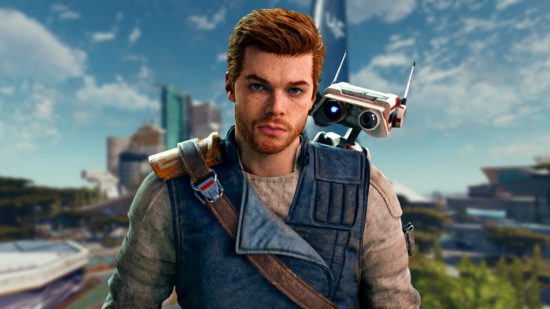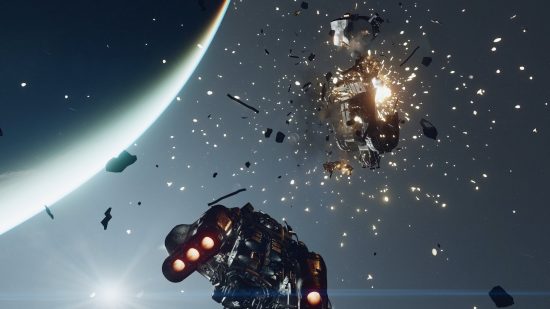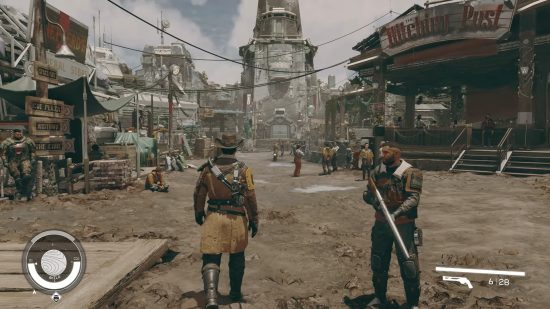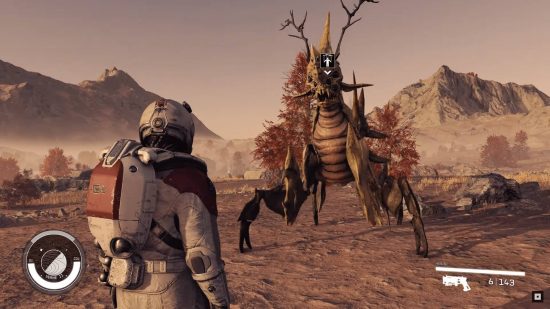The Starfield release date is now mere weeks away, yet heated debates already swirl about whether or not Starfield should be considered ‘hard sci-fi.’ While the hard sci-fi debate has a long history, beginning well before Starfield was even in development, the space game‘s impending arrival has ignited fires in forums once more.
Before we do anything, though, let’s define what hard sci-fi actually is, and what qualifies something as hard sci-fi. The most universally consistent definition is that the media in question has to emphasize the scientific accuracy and logic of the science that existed at that time.

For example, one of the most famous examples of hard sci-fi that notably doesn’t spark debate is 2001: A Space Odyssey. The film’s success is often attributed to Stanley Kubrick alone, but what often goes undiscussed is the invaluable contributions of over fifty scientific organizations and the co-writing credits of Arthur C. Clarke, one of the most influential hard sci-fi authors of all time.
Despite being a film from 1968, 2001: A Space Odyssey accurately predicts so many technologies that have become commonplace today. From aerospace engineering down to the proliferation of flat screens, Kubrick brings to life a realistic vision of the future, backed up by the hundreds of scientific experts screening it. There may have been inaccuracies here and there for dramatic effect, but they are nitpicks compared to the overall vision of the story.
Meanwhile, Starfield demonstrably breaks many hard sci-fi rules, going off of its existing trailers alone. Notably, the existence of combat sounds in space, which is a vacuum, doesn’t make much sense. There are also the more fantastical elements such as gravity drives that fold space; essentially another method for faster-than-light space travel, which remains infeasible.
With all these factors in mind, it’s clear that Starfield is not prioritizing ‘hardness’ in its sci-fi setting. The spectacle of space combat is a lot harder to display when it has to consider real-world implications. So the question is why did so many people argue for Starfield’s status as a hard sci-fi?
That’s because Starfield looks realistic. Popular media has perpetuated certain ‘looks’ for different brands of science fiction. If your show has blue aliens and magic, it’s probably ‘soft sci-fi.’ That’s the kind of sci-fi that is practically fantasy, only using science as set dressing to enable its story. All the recent Star Wars games you’ve been playing are good examples.
Meanwhile, Todd Howard explicitly describes the aesthetic of Starfield to be ‘NASA-punk.’ That means it bases its visual design on the existing space science we have today. However, that’s where most of the similarities end. Most spaceships in the real world are, unfortunately, not equipped with energy cannons and ballistic rockets.
The existence of ships and space suits that remain consistent with our collective idea of what ‘real’ space stuff looks like sells that illusion of authenticity. The effect is even more impressive considering there are literal space cowboys in Starfield.
That feeling of ‘realism’ certainly lends the game a different vibe, but that doesn’t change its fantastical nature. That being said, maybe it’s for the best that Starfield’s claim to realism remains purely in its aesthetic.

When Todd Howard was directly asked whether or not Starfield was hard sci-fi, he said that, while he thinks it leans towards hard sci-fi, it has to make several concessions for the player. Gameplay being such a huge part of the Bethesda experience means it’s inextricably linked to the game’s storytelling. Space combat is exciting; checking fuel graphs to see if you’ll be able to make it to a planet in six weeks instead of seven is not (unless you really love Kerbal Space Program, that is).
Overall, the debate around whether Starfield is hard sci-fi or not has no real bearing on the gameplay, because Howard himself confirmed that ‘hardness’ was not the priority. However, the debate arguably does affect the perception of hard sci-fi as a genre.
It leads to an unfortunate misunderstanding of both soft and hard sci-fi. Expecting Starfield to be scientifically accurate in its storytelling will only result in frustration. Genres exist to facilitate easy discussion of stories, and while they inevitably shift and morph over time to include new trends and ideas, in Starfield’s case, we’re talking about a game that still shrugs off easy classification. So it’s neither Star Wars nor 2001: A Space Odyssey, and provided you go in expecting the aesthetics of a hard sci-fi adventure but the fantastical edge of soft sci-fi, it seems as though you’re unlikely to be disappointed.
If you’re getting ready to jump into Bethesda’s latest, be sure to check out our guides to all the Starfield companions, Starfield missions, and even what we know so far about the Starfield mods. You’ll also need to consider which Starfield traits and Starfield background to pick ahead of time so you can get into the action fast.



